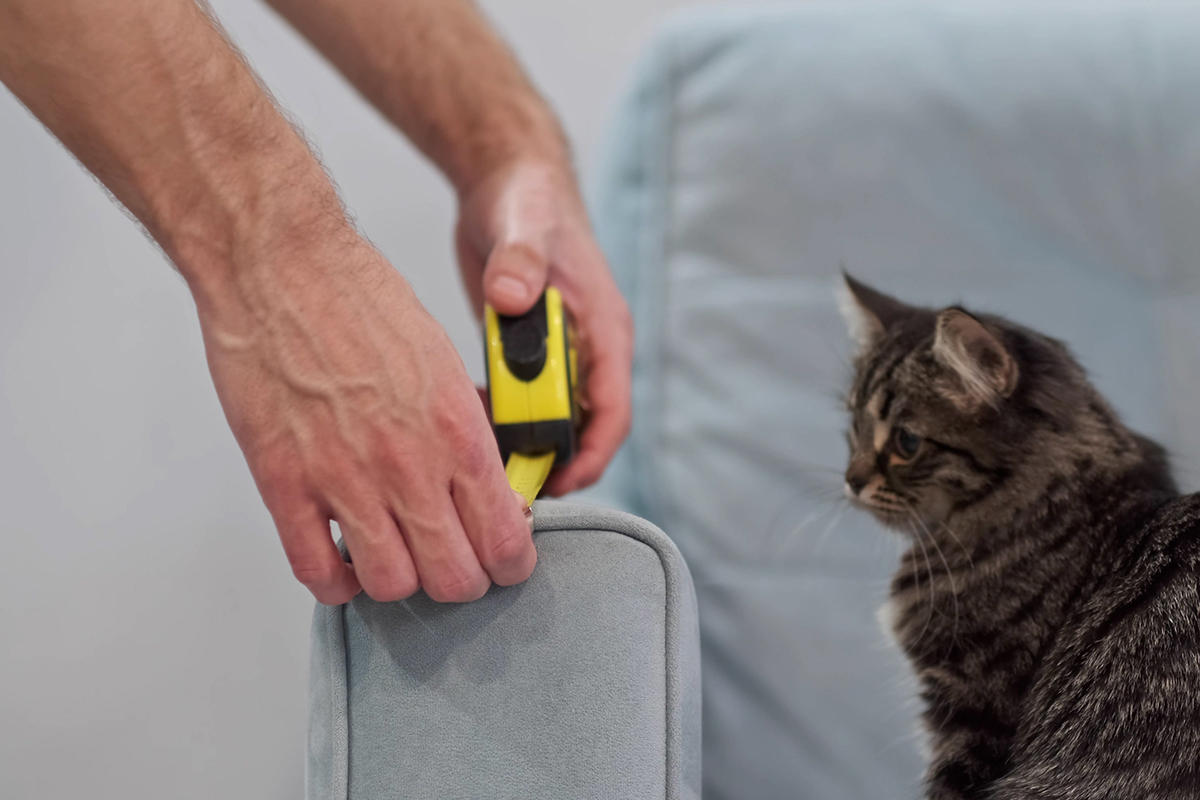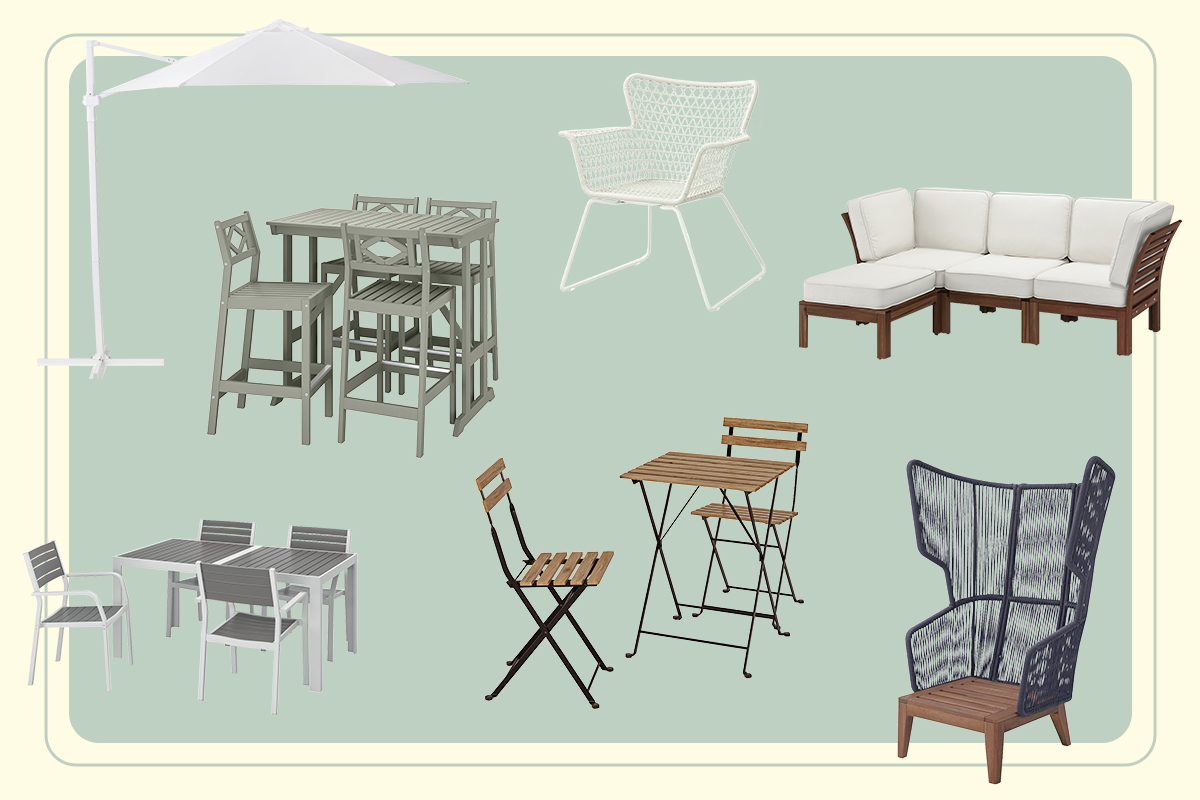Whether you like big, soft couches where you can sip your coffee while sitting in your pajamas or minimalist ones that are more decorative than functional, the size of your couch has considerable influence over the look, feel, and functionality of your room. This article is your guide for all things related to the process of choosing a couch and will help you make informed decisions when finding the perfect one for your home.
Because couch sizes can vary, it’s essential that you understand the pros and cons not just of the sofa dimensions you’re considering but also of the spot where you plan to put the couch after you buy it.
What Are the Standard Couch Dimensions?
Standard sofa dimensions are typically between 72-84 inches in length, 30-36 inches in width (also called depth), and 30-36 inches in height. Below is a couch size chart for typical couch dimensions based on the most common types:
| Sofa type | Length (inches) | Width (inches) | Height (inches) |
| Standard sofa | 72-84 | 30-36 | 30-36 |
| Love seat | 48-72 | 30-36 | 30-36 |
| 3-seat | 80-96 | 30-36 | 30-36 |
| 4-seat | 90-120 | 36-42 | 30-36 |
| 6-seat | 120-140 | 36-42 | 30-36 |
Standard Couch Width
The standard width (or depth) of your couch—that is, how far back the cushions go when combined with the upholstered rear side of the couch—is typically 32-40 inches. It’s important to note the difference between seat width and the full width of a couch, because when it comes time to move, the actual couch width will determine what entryways you’ll be able to fit your couch through.
Seat depth is also critical when considering comfort! Too deep, and your legs won’t be able to hang over the edge. Too shallow, and you might feel as if the couch is pushing you off. When weighing your available space vs. your intended comfort, the width of the couch’s seats is key!
Standard Couch Length
If you’re wondering how long an average couch is, you’re not alone. In fact, a major component of a couch’s design is its length—it dictates how many people can comfortably sit on it and how functional it will ultimately be in your home. Standard couch length can be anywhere from 72 to 96 inches, but this can vary depending on your couch’s shape (i.e. if your couch makes an “L” shape, if your couch is curved, or if you have a smaller loveseat vs. a standard couch).
The width of armrests on either side of the couch also matters, as this will contribute to the overall couch length while also impacting the length of the seating-area.
When considering length, also think about (and measure!) the enterways and room doorways in your home. Often, you’ll have to tip the couch to get it into a room, and where width doesn’t become a blocker, length definitely can become one!
Average Couch Height
Finally, your couch’s height shouldn’t be an afterthought—it has an impact on the design of your room, how comfortable the couch is, and how easily you’ll be able to stand up off of it from a sitting position. A standard height range for a sofa is 30-36 inches, though it can again vary based on design.
How to Measure Your Space for a Couch?
As mentioned above, measuring is an important—and perhaps the first—step you should take when selecting a couch. Once you’ve viewed the couch size chart and selected the sofa dimensions you hope to buy, you can start measuring to see if the couch sizes you’re considering will be a good fit! Below, we’ll tackle all the measurements you need to consider when selecting a couch.
1. Measure the Space and Entries

When measuring your living space before buying a new couch, it’s essential to measure entryways, stairways, hallways, and the dimensions of the room where you want your couch to be. Use a tape measure to measure your entire path from outside and into your house to make sure the couch you want actually fits.
As the core sofa dimensions for non-modular pieces are set in stone, you’ll want these couch measurements to give you (at the very minimum) dimensions that will indeed fit through every single doorway, hallway, or walkway.
2. Measure the Exact Spot to Place the Couch

It won’t serve you well to simply eyeball the spot where you want to put your couch. The space can often look either too big or too small if you’re using your eyes to judge, so measuring will let you know for sure! If your couch will look crammed or lonesome in the space you want to put it in, consider finding a different space or a different-sized couch.
3. Take the Couch Measurements to Fit in the Desired Area

Once you’ve measured your space, cross check the measurements with the actual couch dimensions (see below for a breakdown of key couch measurements to gather!). It can also help to make a couch drawing reference of your space so you can envision what it will look like when it is placed.
Couch Dimensions FAQs
In this section, we’ll address common questions you might have about average couch dimensions, measuring, and how to move a couch once you’ve purchased it. Let’s dive in!
How to measure a couch?
When measuring a couch, use a tape measure to determine the following dimensions:
- Length (edge to edge). This refers to the entire length of the couch, including the seat back and arm rests. Generally, it is the maximum length your couch can ever be, once the entire piece is assembled.
- Length (seat only). This is the length of the seating area only—the part covered by cushions!
- Width/depth. This is how long the couch is from the front to the back. Note that “back” in this case means the true back of the couch, not just the distance from the front to the backseat cushions.
- Height (with and without seat back cushions). When moving the couch, you can potentially remove both the seat and seat back cushions to help squeeze it through small doorways. This can be especially helpful when the seat back cushions exceed the height of the couch’s base structure.
- Height (with and without legs). It may also be necessary to remove your couch’s legs (if possible) when fitting it through doorways. Measuring the “with-legs” and “without-legs” dimensions prior to moving the couch can help you troubleshoot if you run into space limitations.
How long is the average couch?
Standard sofa dimensions can vary, but typically, an average 3-seat sofa will be anywhere between 72-84 inches. As mentioned above, however, couch dimensions can vary based on whether you have a love seat, a standard couch, an L-shaped couch, or even a curved couch.
Does a couch height include the legs?
Couch legs are typically included as part of a couch’s listed sofa dimensions. Even so, if a couch has legs, you can sometimes remove them to help fit the couch through small spaces. The last thing you want is for a couch leg to damage your doorframe when you’re moving it into your house!
How to choose the right size couch?
When choosing your couch size, there are a few key things to consider. First, you’ll want to make sure your room can comfortably fit the couch—a large couch could easily overwhelm a small room, and a small couch could easily look underwhelming in a large room. You’ll also want to consider the room layout, how many people you’ll want to fit on the couch on a regular basis, and what comfort level you’re looking for. (For example, you may want to have a lot of space while stretching out on a couch.)
How long is a 4-person couch?
Couches that fit four people are typically somewhere between 90-120 inches in length. These can be a great option if you have a big family or if large social gatherings are on your radar.
How to fit a couch through the door?
To fit a couch through a door, you’ll have to measure both your couch and your doorway. If the couch doesn’t fit, you can try reducing its “moving size” by taking off cushions (both seat and backseat cushions, if possible) and removing legs. If you have a modular couch, you can also move the pieces into your space one by one and reassemble the couch there.
Given that couches are large and expensive purchases that will hopefully last you many years, it’s important to consider every factor before making any final decisions. If you don’t want to do the hard work, consider hiring a Tasker to move or assemble it!

























